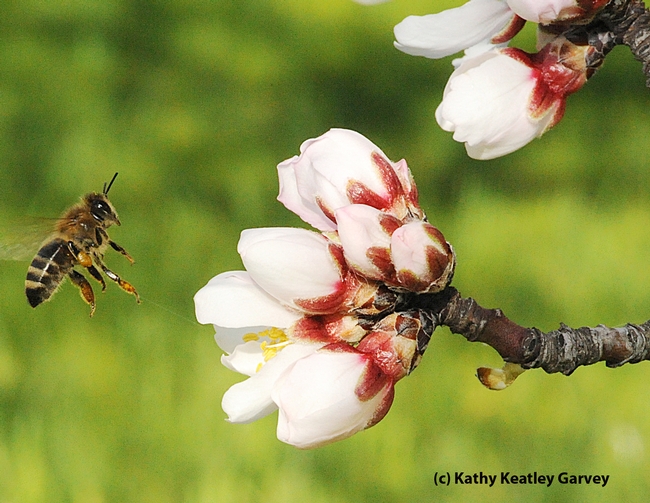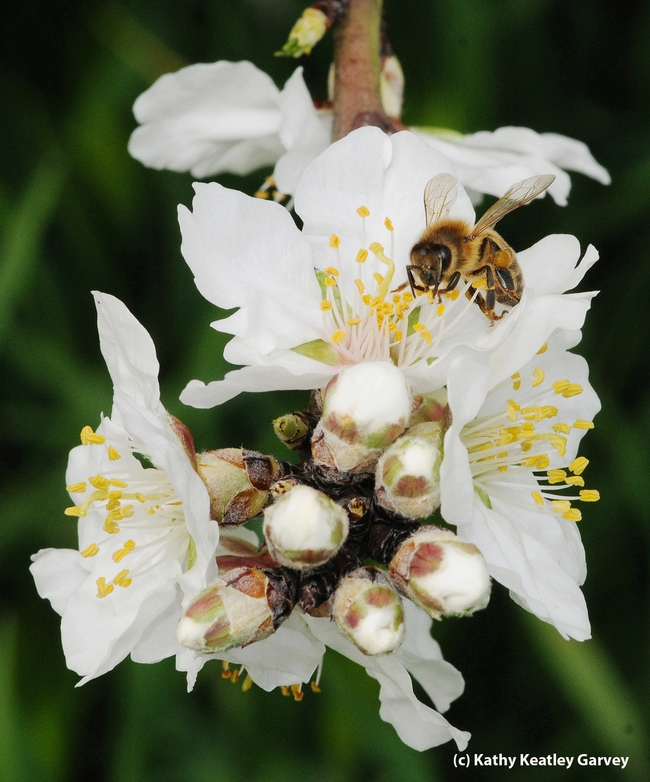
Honey bee guru Eric Mussen, Extension apiculturist with the UC Davis Department of Entomology, said today that almond growers may not have enough bees to pollinate this year's crop of 800,000 acres.
“We need 1.6 million colonies, or two colonies per acre, and California has only about 500,000 colonies that can be used for that purpose,” he said. “We need to bring in a million more colonies, but due to the winter losses, we may not have enough bees.”
Those winter losses--still being tabulated--and the resulting fewer bees per hive could spell trouble for almond growers, he said.
The fact is 2012 was a bad year for bee nutrition. Honey production appears to be way down, maybe the worst ever in our nation's history. Nectar and pollen foraging are closely linked, Mussen says, and malnutrition is one of the stressors of colony collapse disorder (CCD), which since 2006 has decimated about a third of our nation's bees.
Bee scientists believe that CCD--characterized by adult bees abandoning the hive, leaving behind the queen, brood and food stores--is caused by multiple factors, including pests, parasites, pesticides, diseases, viruses, stress, and yes, malnutrition.
“Many, many colonies are not going to make it through the winter,” said Mussen, an apiculturist in the UC Davis Department of Entomology since 1976 (and who plans to retire in June of 2014). “We won’t have as large a bee population as in the past.”
Already brokers are getting calls from beekeepers saying “I can’t fulfill the contract. I’m going to be short.” Beekeepers charge the almond growers an average of $150 per hive.
The average almond orchard in California is in full bloom around Feb. 14, but some orchards bloom earlier or later, depending on the cultivar and the weather.
It remains to be seen what will happen in the almond orchards this year. Mussen says it may all work out well in the end as “bees pollinate almonds on a community basis. The strong colonies will make up for the weak colonies. The strong colonies will clean the orchard of pollen by early afternoon and then go down the street and grab food from nearby orchards.”
Almonds are California's biggest export. This year the National Agricultural Statistics Service is forecasting a record-breaking 2.10 billion meat pounds, valued at approximately $3 billion. California grows 80 percent of the global supply of almonds, and about 70 percent of California’s crop is marketed overseas.
No bees? No almonds.
Attached Images:

